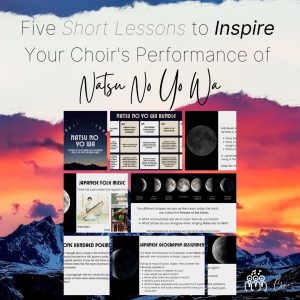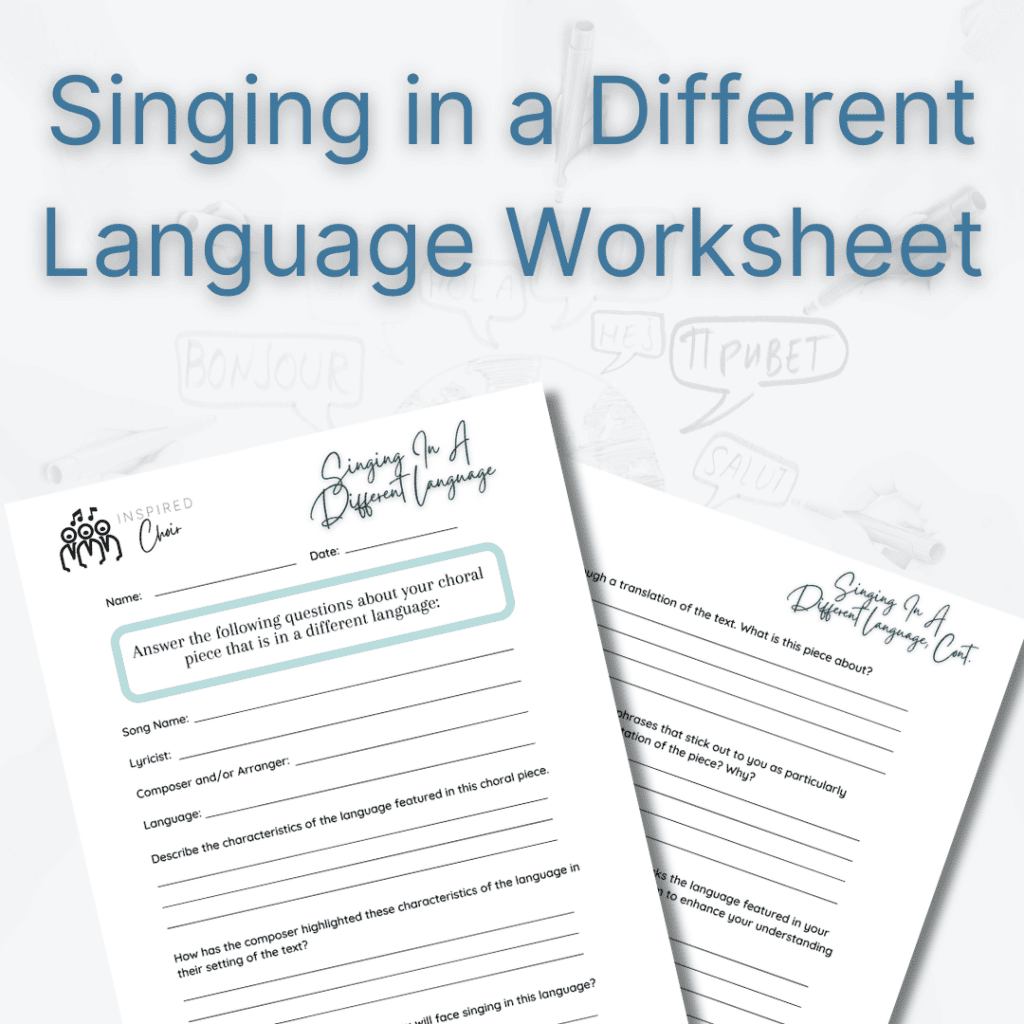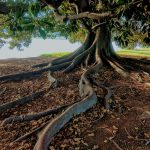An Intro to Japanese Folk Music with Ruth Morris Gray’s Natsu No Yo Wa
With a sweet, pentatonic melody, accessible harmonies, and Japanese folk roots, Ruth Morris Gray’s Natsu No Yo Wa is an excellent choice for beginner choirs of all ages. Below is an in-depth guide to Natsu No Yo Wa including:
- Setting the Scene: Japanese Culture
- Japanese Folk Music: Minyo
- Current Japanese Music
- Musical Elements of Natsu No Yo Wa
- Natsu No Yo Wa Teacher Resources
- …and so much more!
Some of the links below are affiliate links. This means that, at zero additional cost to you, I will earn an affiliate commission if you click through the link and finalize a purchase.
Simple & Successful
This past April, I had the pleasure of conducting the 4th-8th Grade Girl’s Choir for Alabama ACDA’s Young Voices Festival. Natso No Yo Wa by Ruth Morris Gray was one of the five pieces I chose for this ensemble. (See the full “Elements” Program Round-Up Here). Selecting repertoire for honors choirs presents a few challenges:
- First, I didn’t know the singers, their experience level, or how much time they would have to prepare for the festival.
- Second, I wanted to challenge the students, but it needed to be realistic considering we only had six or so hours to rehearse five pieces together before the performance.
- Third, I wanted the singers to sing music representing a variety of cultures and contexts.
- Finally, the conference organizers asked for simple music that would allow the students to feel successful and excited about choir.
Natsu No Yo Wa turned out to be a perfect choice for this ensemble! Many of the singers had rehearsed with tracks before arriving to the festival, so the piece came together quickly. Although the ensemble initially struggled with rounds and holding harmonies in other pieces, the short call and response motives in Natsu No Yo Wa allowed them to be successful immediately. Additionally, the composer’s natural voice leading in both parts throughout served the singers well.

Painting Natsu No Yo Wa’s Picture
Because the Young Voices singers learned the melodies, harmonies, and text so quickly, we were able to spend a nice amount of rehearsal focusing on musicianship and story-telling. With the knowledge of the history and context of the piece, these young singers painted a beautiful aural image of the moon setting behind the mountains of Kyōto.
Setting Natsu No Yo Wa’s Scene
Kiyohara no Fukayabu authored the text of Natsu No Yo Wa in the 13th century. This short poem was featured in Ogura Hyakunin Isshu. Ogura was a district in what was then Japan’s capital, Kyoto. Hyakunin Isshu loosely translates to “100 people, one poem each.” So Kiyohara no Fukayabu was just one of the one hundred poets featured within this compilation.
Natsu No Yo Wa is an example of waka, a type of Japanese poetry that predates haiku and utilizes a 5-7-5-7-7 meter. The poem references short summer nights and the moon hiding behind the clouds. It is possible that Kiyohara no Fukayabu created this poem with Kyoto’s hilly landscape in mind. In this case, the moon could be hiding behind the clouds or the hills. Check out this blog post for a variety of contrasting translations and interpretations of the waka.
As you listen to or sing Natsu No Yo Wa, can you envision the moon hiding on a short summer night? Can you imagine the sights and sounds the author may have experienced as he wrote this poem? How does this knowledge help us shape our tone and interpretation of the melody that Ruth Morris Gray composed for this piece?
For learners of all ages, children’s books can help set the scene. Below are a few book options that might help contextualize Kyoto and different elements of Japanese culture:
It’s also interesting to see the different ways that artists have interpreted the same text. The Lorelei Ensemble featured Peter Gilbert’s interpretation of Natsu No Yo Wa on their Album Impermanence. And the Met Museum paired Fukayabu’s text with the ca. 1835 painting by Katsushika Hokusai pictured below.

Japanese Minyo
Minyo translates to “folk song”, or “song of the people.” Hallmarks of Japanese minyo include ritualized performance, meditative character, and natural sounds represented by percussion, wind, and stringed instruments. There are many types of Japanese folk songs, including work songs, lullabies, religious songs, and children’s songs.
Three influential Japanese folk instruments are the:
- Shamisen: a three-stringed instrument that is played like a guitar but sounds like a violin
- Shakuhachi: a flute made of bamboo
- Koto: a large wooden instrument with 13, 17, 21, or 31 strings played by picking. The national instrument of Japan.
Ruth Morris Gray emulates the meditative character of folk music, representation of nature, and sounds of the shakuhachi within her version of Natsu No Yo Wa. How can we as singers carry the feelings of minyo through to our interpretation of the piece?

Current Japanese Music
All too often in choral music, we essentialize a culture to one musical tradition. Although Japanese folk music is rich and beautiful, there is so much more music out there! Here are a few places to start to broaden our idea of Japanese music:
- J-pop: There are a wide array of Japanese popular music performers. Boybands, girl groups, hiphop, rock – they’ve got it all! I am currently listening to this J-Pop Playlist on Spotify.
- Japanese Techno: Techno world-wide wouldn’t be the genre it is now if not for Japanese technology. Check out this playlist for an intro to Japanese Techno.
- Japanese Classical Music: As international travel and study became more popular in the late 19th Century, western classical music made its way to Japan. There continue to be a large population of symphonies, wind bands, and choirs that play music from a large variety of composers and cultures. This “The Sound of Japanese Classical” playlist shows the breadth of this genre well.
Musical Elements
Sometimes it’s a little bit easier to grasp on to music theory concepts when you see them in context. Here are a few musical concepts you may come across as you study this piece:
- Pentatonic Scale: a musical scale with five notes (as opposed to an eight note scale)
- piano: (dynamic) soft
- mezzo piano: medium soft
- mezzo forte: medium loud
- forte: loud
- crescendo: gradually get louder
- decrescendo: gradually get softer
- rit.: short for ritardando – to slow down gradually
- a tempo: return to the original tempo
- fermata (𝄐): hold until the conductor indicates to move on
Complementary Pieces
Want to listen to other pieces like Natsu No Yo Wa? Or planning a concert and need some programming ideas? Here are a few complementary pieces!
Enjoying the aesthetic of Japanese Choral Music?
- The Toronto Children’s Choir performed the folk song Furusato. I haven’t been able to find the exact arrangement that they used, but here is an SSA arrangement by Hisao Nishiwaki. Or if you wanted to get creative, you could combine the harmonies from IMSLP (free!) with the lyrics here.
- Takatomi Nobunaga’s From Dawn to Nightfall memorializes those who suffered from the Great East Japan Earthquake.
- Rachel Stenson’s arrangement of Fuyu No Uta highlights a children’s snow song from Japan.
Feeling a Moon Theme?
- David Child’s setting of Emily Dickinson’s The Moon is Distant from the Sea is equal parts haunting and beautiful.
- Andy Beck’s The Moon would be a perfect pairing with Natsu No Yo Wa for a beginning choir.
- Want to get jazzy with it? How about an arrangement of Blue Moon?

I’d Love to Hear from You!
Have you sung or conducted Natsu No Yo Wa with your choir? How did you set the scene for your performance of the piece? What other Japanese music have you engaged with? I talked a bit about cultural appreciation vs. appropriation in this post. How does this composition fit in that conversation? Let me know in the comments section below!
Natsu No Yo Wa Teacher Resources
Free Comprehension Worksheets
Choir Leaders! I have begun to include short comprehension worksheets with each Inspired Choir blog post. Each worksheet includes 5-6 knowledge-based questions about the post and concludes with a musical decisions/applications question. Use as a homework assignment, sub activity, listening challenge, or guide for conversation in class. Fill in the form below to receive a link immediately to all “Elements” and “Ascend” Reading Comprehension Worksheets.
Natsu No Yo Wa Lesson Plan Bundle
Check out the Inspired Choir Shop for the Natsu No Yo Wa Lesson Plan Bundle. This bundle includes the following five minute lesson plans, all with connections to National Standards and SEL Competencies:
- Japanese Folk Music Lesson
- Current Events: Japanese Music Assignment
- One Hundred Poems Project
- Phases of the Moon Lesson
- Japanese Geography Assignment

Singing in A Different Language Worksheet
Check out the Inspired Choir Shop for the Singing in A Different Language Worksheet. Utilizing this worksheet, singers will:
- Examine the characteristics of the language in which they are singing
- Consider the ways in which the composer has highlighted the language in their work
- Anticipate challenges of singing in the language
- Interpret the meaning of their piece
- Prepare their score with the appropriate annotations





















